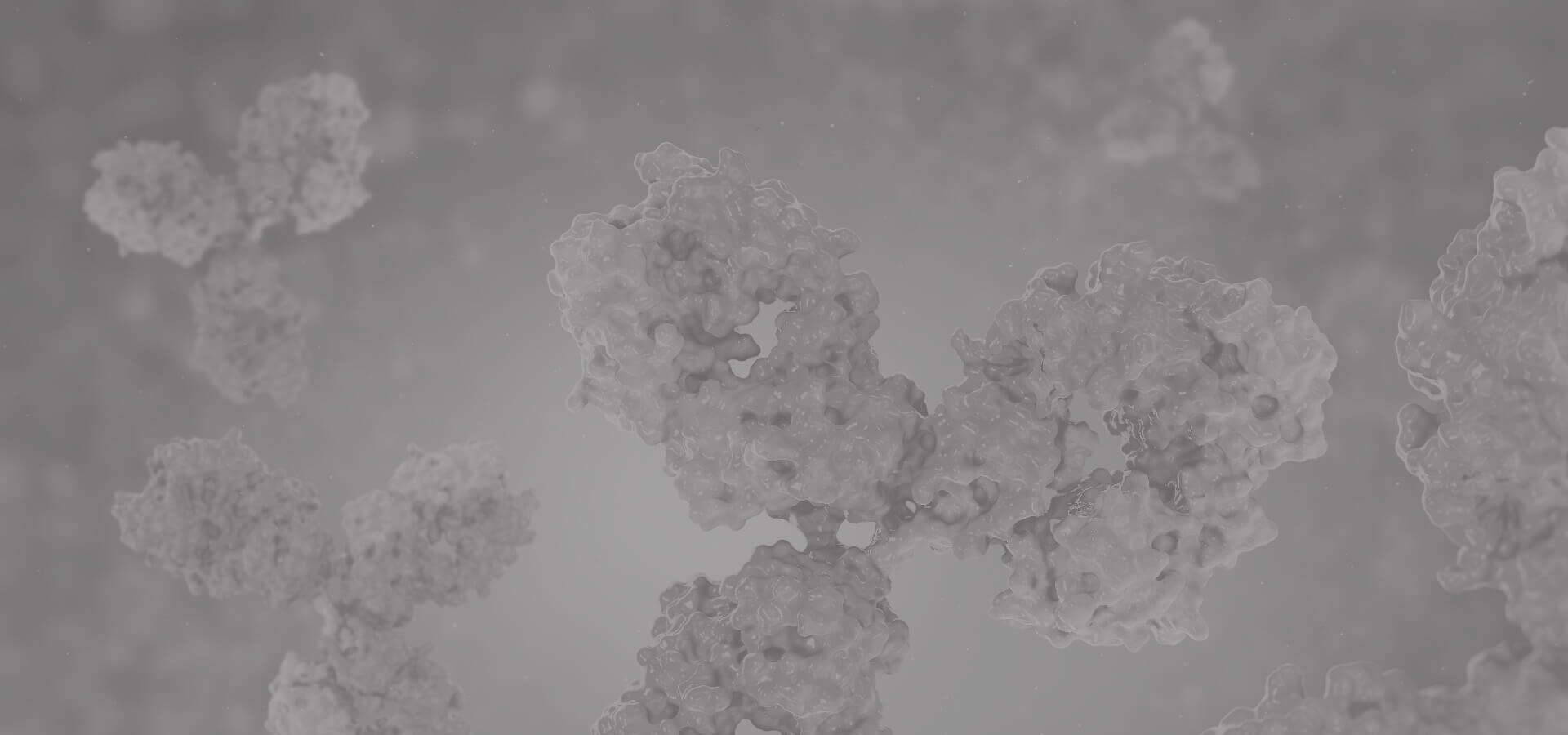CLTC
Clathrin is a major protein component of the cytoplasmic face of intracellular organelles, called coated vesicles and coated pits. These specialized organelles are involved in the intracellular trafficking of receptors and endocytosis of a variety of macromolecules. The basic subunit of the clathrin coat is composed of three heavy chains and three light chains. [provided by RefSeq, Jul 2008]
Full Name
Clathrin Heavy Chain
Function
Clathrin is the major protein of the polyhedral coat of coated pits and vesicles. Two different adapter protein complexes link the clathrin lattice either to the plasma membrane or to the trans-Golgi network. Acts as component of the TACC3/ch-TOG/clathrin complex proposed to contribute to stabilization of kinetochore fibers of the mitotic spindle by acting as inter-microtubule bridge (PubMed:15858577, PubMed:16968737, PubMed:21297582).
The TACC3/ch-TOG/clathrin complex is required for the maintenance of kinetochore fiber tension (PubMed:23532825).
Plays a role in early autophagosome formation (PubMed:20639872).
The TACC3/ch-TOG/clathrin complex is required for the maintenance of kinetochore fiber tension (PubMed:23532825).
Plays a role in early autophagosome formation (PubMed:20639872).
Biological Process
Amyloid-beta clearance by transcytosis Source: ARUK-UCL
Antigen processing and presentation of exogenous peptide antigen via MHC class II Source: Reactome
Autophagy Source: UniProtKB-KW
Cell division Source: UniProtKB-KW
Clathrin coat assembly Source: CAFA
Clathrin-dependent endocytosis Source: ARUK-UCL
Intracellular protein transport Source: UniProtKB
Low-density lipoprotein particle clearance Source: Reactome
Low-density lipoprotein particle receptor catabolic process Source: Reactome
Membrane organization Source: Reactome
Mitotic cell cycle Source: UniProtKB
Negative regulation of hyaluronan biosynthetic process Source: UniProtKB
Negative regulation of protein localization to plasma membrane Source: UniProtKB
Osteoblast differentiation Source: UniProtKB
Post-Golgi vesicle-mediated transport Source: Reactome
Receptor internalization Source: BHF-UCL
Receptor-mediated endocytosis Source: UniProtKB
Regulation of mitotic spindle organization Source: UniProtKB
Retrograde transport, endosome to Golgi Source: UniProtKB
Transferrin transport Source: BHF-UCL
Wnt signaling pathway, planar cell polarity pathway Source: Reactome
Antigen processing and presentation of exogenous peptide antigen via MHC class II Source: Reactome
Autophagy Source: UniProtKB-KW
Cell division Source: UniProtKB-KW
Clathrin coat assembly Source: CAFA
Clathrin-dependent endocytosis Source: ARUK-UCL
Intracellular protein transport Source: UniProtKB
Low-density lipoprotein particle clearance Source: Reactome
Low-density lipoprotein particle receptor catabolic process Source: Reactome
Membrane organization Source: Reactome
Mitotic cell cycle Source: UniProtKB
Negative regulation of hyaluronan biosynthetic process Source: UniProtKB
Negative regulation of protein localization to plasma membrane Source: UniProtKB
Osteoblast differentiation Source: UniProtKB
Post-Golgi vesicle-mediated transport Source: Reactome
Receptor internalization Source: BHF-UCL
Receptor-mediated endocytosis Source: UniProtKB
Regulation of mitotic spindle organization Source: UniProtKB
Retrograde transport, endosome to Golgi Source: UniProtKB
Transferrin transport Source: BHF-UCL
Wnt signaling pathway, planar cell polarity pathway Source: Reactome
Cellular Location
Spindle; Cytoplasmic vesicle membrane; Coated pit; Melanosome. Cytoplasmic face of coated pits and vesicles. Identified by mass spectrometry in melanosome fractions from stage I to stage IV. In complex with TACC3 and CKAP5 (forming the TACC3/ch-TOG/clathrin complex) localized to inter-microtubule bridges in mitotic spindles.
Involvement in disease
Mental retardation, autosomal dominant 56 (MRD56):
A form of mental retardation, a disorder characterized by significantly below average general intellectual functioning associated with impairments in adaptive behavior and manifested during the developmental period.
A form of mental retardation, a disorder characterized by significantly below average general intellectual functioning associated with impairments in adaptive behavior and manifested during the developmental period.
View more
Anti-CLTC antibodies
+ Filters
 Loading...
Loading...
Target: CLTC
Host: Mouse
Antibody Isotype: IgG1, κ
Specificity: Human
Clone: CBCNC-216
Application*: E
Target: CLTC
Host: Mouse
Antibody Isotype: IgG2b
Specificity: Human, Mouse, Rat
Clone: CBCNC-030
Application*: WB, IH, F
Target: CLTC
Host: Rabbit
Antibody Isotype: IgG
Specificity: Human, Mouse, Rat
Clone: CBWJC-2825
Application*: WB, IH, IF
Target: CLTC
Host: Mouse
Antibody Isotype: IgM, κ
Specificity: Human
Clone: 3H9
Application*: WB, P, IF, IP
Target: CLTC
Host: Mouse
Antibody Isotype: IgG2a, κ
Specificity: Human
Clone: 2E5
Application*: E, WB, PLA
Target: CLTC
Host: Mouse
Antibody Isotype: IgG1, κ
Specificity: Soybean
Clone: CBXC-2481
Application*: IF, WB
Target: CLTC
Host: Mouse
Antibody Isotype: IgG2a, κ
Specificity: Cattle, Human, Mouse, Pig, Rat, Horse
Clone: C0591
Application*: WB, IF, E, IP
Target: CLTC
Host: Mouse
Antibody Isotype: IgG2b, κ
Specificity: Cattle, Human, Mouse, Pig, Rat, Horse
Clone: CBFYC-1963
Application*: WB, P, IF, E, IP
Target: CLTC
Host: Mouse
Antibody Isotype: IgG1, κ
Specificity: Cattle, Human, Mouse, Pig, Rat, Horse
Clone: CBFYC-1962
Application*: WB, P, IF, E, IP
Target: CLTC
Host: Mouse
Antibody Isotype: IgG1, κ
Specificity: Human, Mouse, Rat, Cattle
Clone: C1118
Application*: WB, IP
Target: CLTC
Host: Mouse
Antibody Isotype: IgG1
Specificity: Human, Mouse, Rat, Cattle, Hamster
Clone: 1394
Application*: WB, IH, IF, IP, F
Target: CLTC
Host: Mouse
Antibody Isotype: IgG1, κ
Specificity: Human, Mouse, Rat
Clone: 1393
Application*: WB, IP, IF, P
Target: CLTC
Host: Mouse
Antibody Isotype: IgM
Specificity: Human, Mouse, Pig, Rat, Cattle
Clone: 1392
Application*: E, F, IF, IP, WB
More Infomation
Hot products 
-
Mouse Anti-ALB Recombinant Antibody (V2-55272) (CBMAB-H0819-FY)

-
Rat Anti-AChR Recombinant Antibody (V2-12500) (CBMAB-0990-CN)

-
Mouse Anti-FN1 Monoclonal Antibody (D6) (CBMAB-1240CQ)

-
Mouse Anti-8-oxoguanine Recombinant Antibody (V2-7697) (CBMAB-1869CQ)

-
Mouse Anti-AFM Recombinant Antibody (V2-634159) (CBMAB-AP185LY)

-
Mouse Anti-AZGP1 Recombinant Antibody (CBWJZ-007) (CBMAB-Z0012-WJ)

-
Armenian hamster Anti-CD40 Recombinant Antibody (HM40-3) (CBMAB-C10365-LY)

-
Mouse Anti-F11R Recombinant Antibody (402) (CBMAB-0026-WJ)

-
Mouse Anti-BPGM Recombinant Antibody (CBYY-1806) (CBMAB-2155-YY)

-
Mouse Anti-ADGRE2 Recombinant Antibody (V2-261270) (CBMAB-C0813-LY)

-
Mouse Anti-FOXA3 Recombinant Antibody (2A9) (CBMAB-0377-YC)

-
Mouse Anti-ARHGAP5 Recombinant Antibody (54/P190-B) (CBMAB-P0070-YC)

-
Mouse Anti-CECR2 Recombinant Antibody (CBWJC-2465) (CBMAB-C3533WJ)

-
Mouse Anti-ASTN1 Recombinant Antibody (H-9) (CBMAB-1154-CN)

-
Mouse Anti-CCL18 Recombinant Antibody (64507) (CBMAB-C7910-LY)

-
Rabbit Anti-ABL1 (Phosphorylated Y245) Recombinant Antibody (V2-505716) (PTM-CBMAB-0465LY)

-
Mouse Anti-ALB Recombinant Antibody (V2-363290) (CBMAB-S0173-CQ)

-
Mouse Anti-ADV Recombinant Antibody (V2-503423) (CBMAB-V208-1364-FY)

-
Mouse Anti-CCDC6 Recombinant Antibody (CBXC-0106) (CBMAB-C5397-CQ)

-
Mouse Anti-CIITA Recombinant Antibody (CBLC160-LY) (CBMAB-C10987-LY)

For Research Use Only. Not For Clinical Use.
(P): Predicted
* Abbreviations
- AActivation
- AGAgonist
- APApoptosis
- BBlocking
- BABioassay
- BIBioimaging
- CImmunohistochemistry-Frozen Sections
- CIChromatin Immunoprecipitation
- CTCytotoxicity
- CSCostimulation
- DDepletion
- DBDot Blot
- EELISA
- ECELISA(Cap)
- EDELISA(Det)
- ESELISpot
- EMElectron Microscopy
- FFlow Cytometry
- FNFunction Assay
- GSGel Supershift
- IInhibition
- IAEnzyme Immunoassay
- ICImmunocytochemistry
- IDImmunodiffusion
- IEImmunoelectrophoresis
- IFImmunofluorescence
- IGImmunochromatography
- IHImmunohistochemistry
- IMImmunomicroscopy
- IOImmunoassay
- IPImmunoprecipitation
- ISIntracellular Staining for Flow Cytometry
- LALuminex Assay
- LFLateral Flow Immunoassay
- MMicroarray
- MCMass Cytometry/CyTOF
- MDMeDIP
- MSElectrophoretic Mobility Shift Assay
- NNeutralization
- PImmunohistologyp-Paraffin Sections
- PAPeptide Array
- PEPeptide ELISA
- PLProximity Ligation Assay
- RRadioimmunoassay
- SStimulation
- SESandwich ELISA
- SHIn situ hybridization
- TCTissue Culture
- WBWestern Blot

Online Inquiry







